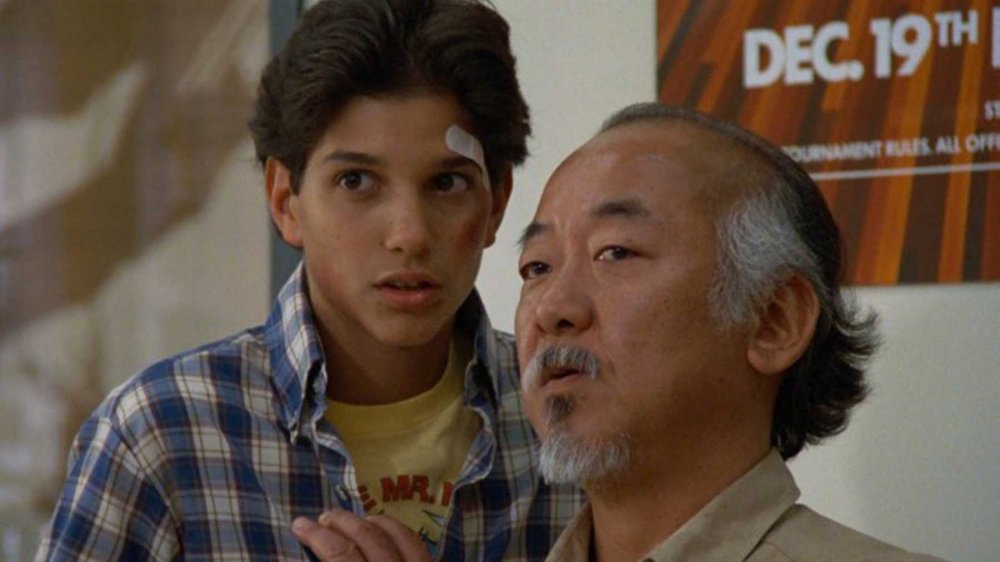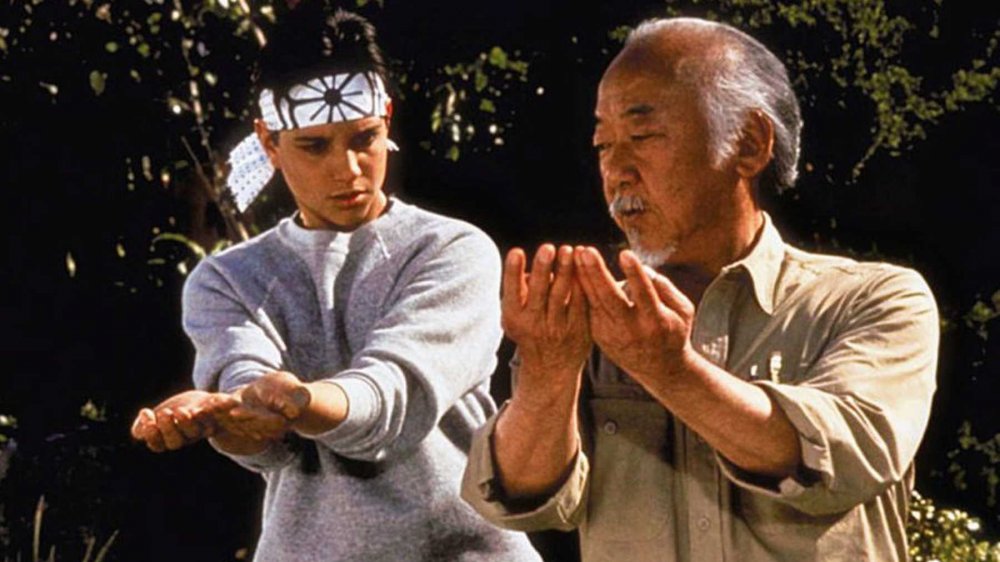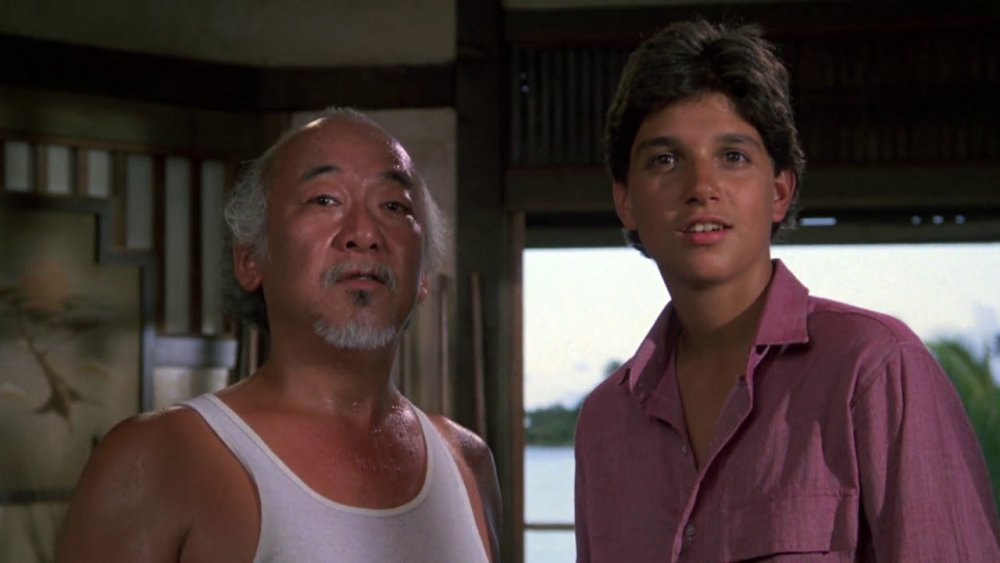The Truth About Mr. Miyagi's Martial Arts Style
As suggested by the title, martial arts play a major role in The Karate Kid franchise.
When Mr. Miyagi (Pat Morita) takes young Daniel LaRusso (Ralph Macchio) into his tutelage, he follows an unusual approach to teaching the boy martial arts. At first, he has Daniel hone his fighting skills by performing repetitive household tasks, as in the famous "wax on; wax off" scene. These chores secretly translate into martial arts movements. Miyagi-Do, as Mr. Miyagi's form of karate is called, becomes the tool LaRusso uses to overcome Cobra Kai Karate, his chief rival in the first film. The martial art is portrayed as a mysterious form passed down through the Miyagi family in Okinawa, Japan, but what's the truth of it?
Miyagi-Do doesn't exist in the real world. Neither does Cobra Kai for that matter, but there is some legitimacy to the franchise's fight choreography, parts of the Miyagi-Do training method, and the history surrounding the martial art. There are also a few Easter eggs in the original The Karate Kid trilogy that hint at which martial arts style Miyagi-Do is meant to mirror. A lot of the martial arts in the film are performed solely for entertainment, but some parts are actually based on real-world traditions.
A martial art loosely based on actual karate
Miyagi-Do seems to be a loose interpretation of the karate style Goju-Ryu. Most karate styles tend to have several different katas, called "forms" in other martial arts, but for some reason, Miyagi-Do only has the one. The kata is taught to Daniel Larusso by Mr. Miyagi in The Karate Kid Part III, and LaRusso goes on to teach the kata to his students in the sequel series Cobra Kai. That kata includes signature moves seen in the Goju-Ryu kata Seiunchin, though the kata style is seriously toned down for the film.
Chozen, played by Yuji Okumoto, in The Karate Kid Part II is Mr. Miyagi's nephew and one of the villains of the storyline. The whole family trains in the same root style of Miyagi-Do, and the patch seen on the front of Chozen's Gi in the storm scene is a signature Goju-Ryu patch. Furthermore, the history of Miyagi-Do, as Miyagi tells Daniel while in Okinawa during Part II, is similar to that of Goju-Ryu's origin. Miyagi explains that the founder of the martial art passed out drunk on a fishing boat, woke up in China, and trained in Chinese martial arts for ten years before returning to Japan. The founder of Goju-Ryu, Kanryo Higaonna, according to The History of Fighting, trained in Chinese kung fu while working in China and brought it back home to blend it with karate, creating Goju-Ryu. Miyagi's drunk fishing boat story, as comical as it is, didn't happen to Higaonna.
The real Mr. Miyagi
To take even more mystery out of Miyagi-Do's origin, Robert Mark Kamen, who wrote The Karate Kid films, designed Mr. Miyagi after a Goju-Ryu master. According to SFGate, Mr. Miyagi was based on Meitoku Yagi, a personal martial arts inspiration of Kamen's and a student of Miyagi Chojun. Miyagi Chojun is credited as the father of Okinawan Goju-Ryu.
According to Den of Geek, Kamen trained Goju-Ryu under Meitoku Yagi. The story of The Karate Kid is very loosely biographical as it relates to Kamen's own martial arts history. He decided to train karate after getting beaten up by a group of guys at the World's Fair in New York in 1964. He even had an instructor, his first instructor, who was extremely violent (mirroring Cobra Kai), before settling into Goju-Ryu under an instructor who would later influence Mr. Miyagi.
Meitoku Yagi, though not from the actual Miyagi family himself, was chosen as the head of the style by the Miyagi family. His contributions to karate made him famous in Japan, inspiring Emperor Hirohito to bestow the title "Living Treasure" upon him in 1986, according to Gojukan Karate-Do International.
So while Miyagi-Do may be fictional, it's inspired by a tradition with deep Okinawan roots.


